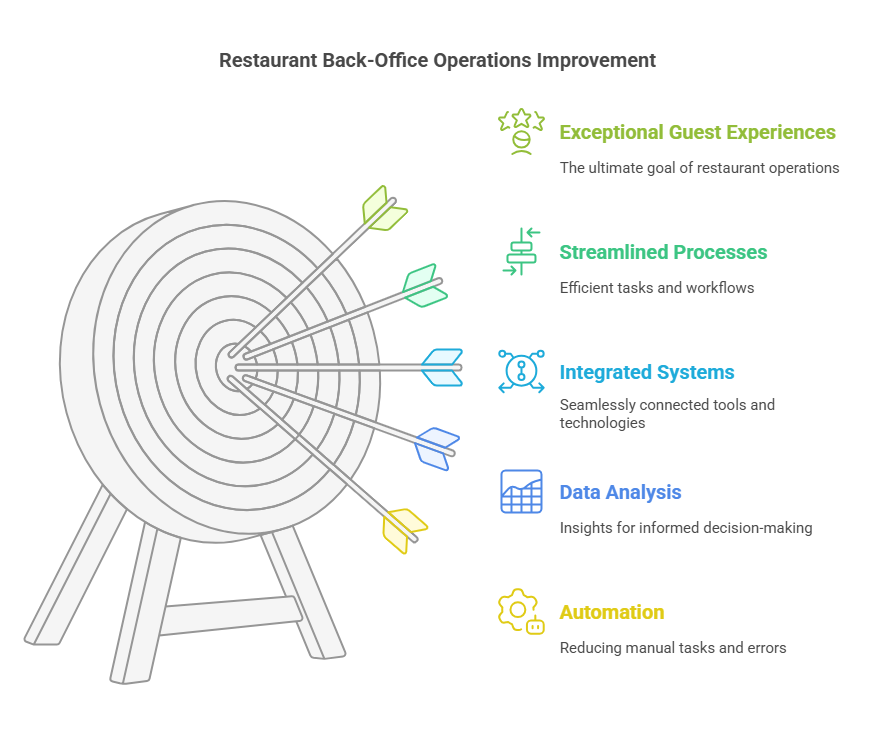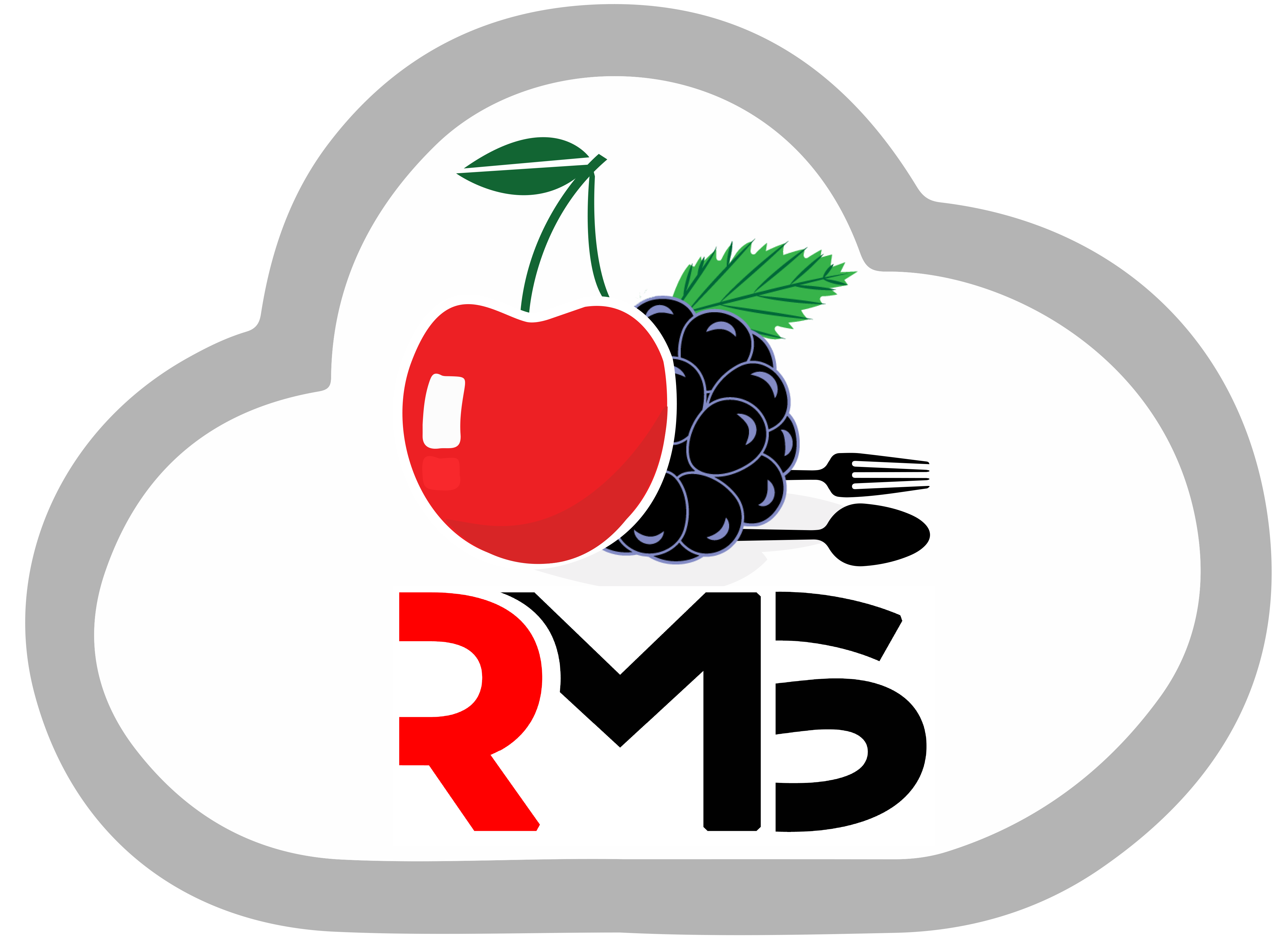
How To Improve Restaurant Back-Office Operations?
In today’s competitive restaurant industry, well-organized back-office operations are the backbone of success. While front-office tasks focus on creating memorable dining experiences, back-office operations ensure everything runs seamlessly behind the scenes. Even top restaurants can face mismanagement, rising costs, and order delays if they neglect critical behind-the-scenes tasks like staff scheduling, invoicing, inventory management, and financial tracking. To ensure long-term success in this competitive industry, restaurateurs must prioritize improving back-office operations. Discover the importance of restaurant operations management and explore top strategies to streamline your back-office processes.
What is Restaurant Operations Management?
Every restaurant operates with both front and back offices, which are interdependent. The front office handles direct customer interactions, while the back office ensures the smooth operation of the business.
In a typical restaurant, waiters take orders and serve food, while cashiers handle billing—these are front-office tasks. Meanwhile, chefs prepare dishes, and HR manages payroll—these are back-office responsibilities.
Below is a table highlighting the key differences between front-office and back-office operations in restaurant workflow optimization.
Factors |
Front Office (Customer-Facing) |
Back Office (Operational & Support) |
Nature |
Manages direct customer interactions | Works behind the scenes, and manages internal operations to ensure efficiency |
Focus |
On customer service, order management, dining experience | Inventory, staffing, scheduling, payroll and financial management |
Functions |
Managing reservations, taking orders, serving food, payment handling | Kitchen operations, procurement, HR, payroll, scheduling, inventory and accounts management |
Roles |
Hosts, waitstaff, cashiers, receptionists, sales, marketing, technical support | Chefs, kitchen staff, managers, HR |
Technology |
POS systems, online ordering apps, table reservation systems, digital menus | Restaurant Management System (RMS), inventory software, payroll, accounting tools, kitchen management and back-office software |
Place |
Dining area, bar, reception, cashier counter | Kitchen, office, storage rooms, departments |
Revenue |
Directly generate revenue | Indirectly support revenue generation |
As the table demonstrates, excellent service relies on an efficient back office. If a single ingredient is missing, a dish cannot be prepared, customers will be dissatisfied, and revenue will suffer. Therefore, balancing front-house and back-end processes is essential for efficient workflows and a satisfying dining experience.
Restaurant operations management involves monitoring finance, staffing, and inventory to improve profitability. These tasks shape the overall guest experience, making it crucial to improve operational processes and staff efficiency.
As a startup, you might rely on manual processes, but ensuring accuracy and productivity can be challenging. In fact, 26% of US restaurateurs identified inventory and food costs as their top financial challenge in 2024.
Fortunately, back-office technology can help. Restaurateurs can automate scheduling, staff tracking, payroll, and inventory management to streamline operations. Interestingly, 50% of US restaurants have already automated staff scheduling and inventory management to enhance efficiency.
Integrating back-office software with front-office systems ensures seamless data sharing. Ready to learn more about improving back-office operations? Keep reading for top strategies used by successful restaurants.
Successful Tips To Improve Restaurant Back-Office Operations

Advanced technological solutions reduce errors, cut costs, and allow you to focus on delivering exceptional guest experiences. Restaurants that leverage technology for back-office operations see significant improvements. Here are actionable tips to transform your processes and drive success.
1. Identify Time-Consuming Processes
Start by evaluating your processes to identify repetitive, labor-intensive, or error-prone tasks. Automating these tasks can save time. Focus on areas like order management, payroll, scheduling, inventory counting, and financial tracking. Identify daily pain points for your team and calculate the time and money wasted on tasks like overtime payments that could be automated.
2. Analyze Metrics & Reports
Analyze past reports and data on labor, expenses, and revenue to identify areas for improvement. Look for trends or anomalies in order completion times, stock levels, labor costs, hourly earnings, and overtime reimbursements. Set clear improvement goals and target specific metrics.
3. Switch to an Integrated Point-of-Sale System
Your POS system plays a critical role in managing reservations, tracking orders, and processing payments. Invest in a system that integrates seamlessly with other tools. Consider these factors when choosing a POS system:
- User-Friendliness: Ensure the system is easy for employees to use.
- Offline Mode: Choose a system that functions during internet outages.
- Order Management Tools: Look for features like advance order scheduling and direct kitchen communication.
- Analytics: opt for a system that provides real-time sales and inventory insights.
- Hardware Compatibility: Ensure compatibility with scanners, cash drawers, and printers
4.Put Scheduling Software in Place
Scheduling software simplifies workforce planning. It uses data to create fair and efficient schedules.
- Estimate Staffing Needs: Analyze sales data, labor metrics, and seasonal factors to predict busy hours.
- Optimize Workforce: Ensure adequate staffing during peak times without overspending on labor.
5.Tableside Ordering Facility
Implement tableside ordering devices or mobile POS systems. This allows customers to browse menus, place orders, and pay without leaving their seats. Your staff can focus on enhancing customer satisfaction rather than just taking orders. Orders are sent directly to the kitchen, speeding up food preparation.
6.Streamline Inventory Control
Effective inventory management is key to improving back-office operations. Automated systems track inventory levels and reorder supplies as needed. This reduces waste, streamlines ordering, and ensures ingredient availability.
7.Offer a Choice of Pick-Up and Delivery
Offering pickup and delivery options is another way to enhance back-office operations. Allow customers to choose between dining in, pickup, or delivery. Let customers select convenient pickup or delivery times. Provide delivery tracking and real-time updates via notifications or texts. Transparency and convenience increase customer loyalty.
Wrapping Up
While focusing on guests and team leadership, back-office tasks often get overlooked. Inventory monitoring, scheduling, and attendance tracking are essential but time-consuming. Managing these tasks manually is inefficient. So, how can you improve back-office operations? Back-office technology and proven strategies can streamline operations for modern restaurants. Ready to boost efficiency? Discover how CherryBerry RMS can simplify your back-office management!
FAQs about How To Improve Restaurant Back-Office Operations
1.What is a restaurant’s back office?
The back office, or back-of-house (BOH), handles behind-the-scenes operations without direct customer interaction.
2.Why is back-office management important for restaurants?
It ensures smooth workflows, reduces costs, and improves profitability, allowing staff to focus on customer satisfaction.
3.What is the difference between back-end and front-office activities?
Front-office tasks involve customer interactions, while back-office tasks focus on internal operations.
4.What are the main back-office functions?
These include inventory management, staff scheduling, payroll, kitchen operations, and financial tracking.
5.How can I improve my restaurant’s back-office operations?
Automate tasks, use data-driven insights, and integrate back-office software for seamless operations.
6.Can automation reduce food waste in my restaurant?
Yes, automated inventory management can significantly reduce food waste.
